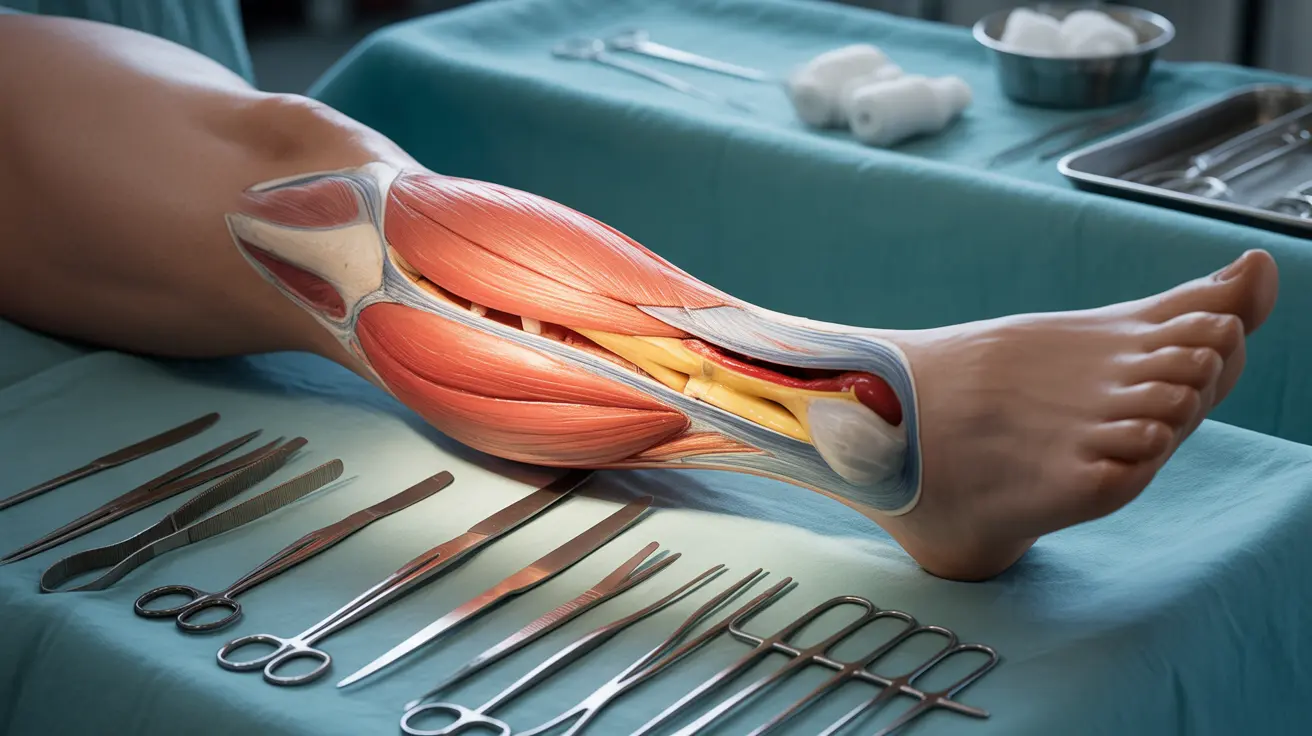A fasciotomy is a crucial surgical procedure performed to relieve dangerous pressure buildup within a muscle compartment. This life-saving intervention involves making precise incisions through the fascia—the tough tissue surrounding muscle groups—to prevent tissue death and restore proper blood flow. Understanding when and why this procedure is necessary can be critical for patients facing compartment syndrome.
Whether performed as an emergency procedure for acute compartment syndrome or as a planned intervention for chronic cases, fasciotomy plays a vital role in preventing permanent muscle and nerve damage. This comprehensive guide will explore the essential aspects of fasciotomy, from its indications to recovery.
What Is Compartment Syndrome?
Compartment syndrome occurs when pressure builds up within a confined muscle compartment, typically in the arms or legs. This pressure can restrict blood flow, potentially leading to severe tissue damage if left untreated. The condition can be either acute (sudden onset) or chronic (developing over time).
Types of Compartment Syndrome
Two main types of compartment syndrome may require fasciotomy:
- Acute compartment syndrome (emergency condition)
- Chronic exertional compartment syndrome (exercise-related)
When Is Fasciotomy Necessary?
A fasciotomy becomes necessary when compartment pressure reaches dangerous levels that threaten tissue viability. Common scenarios include:
- Severe fractures or crush injuries
- Major soft tissue injuries
- Post-surgical complications
- Severe burns
- Snakebites
- Prolonged compression of limbs
The Surgical Procedure
During a fasciotomy, surgeons make strategic incisions to decompress affected muscle compartments. The procedure typically involves:
Surgical Steps
- Initial assessment of compartment pressure
- Careful incision through skin and fascia
- Examination of muscle tissue
- Decompression of affected compartments
- Temporary wound management
Recovery Process
Recovery from fasciotomy requires careful attention and typically progresses through several stages:
Initial Recovery Phase
The immediate post-operative period focuses on:
- Wound care and dressing changes
- Pain management
- Monitoring for complications
- Gradual wound closure
Rehabilitation Phase
Once the initial healing occurs, rehabilitation includes:
- Physical therapy exercises
- Range of motion activities
- Gradual return to normal activities
- Scar management
Frequently Asked Questions
What is a fasciotomy and when is it needed to treat compartment syndrome?
A fasciotomy is a surgical procedure that involves cutting through the fascia to relieve dangerous pressure within muscle compartments. It's needed when compartment syndrome threatens to cause permanent tissue damage due to restricted blood flow, typically following severe injuries or trauma.
What are the common risks and complications associated with a fasciotomy surgery?
Common risks include infection, nerve damage, scarring, chronic pain, and the potential need for additional surgeries. Some patients may also experience delayed wound healing or require skin grafting to close the surgical site.
How long does recovery take after a fasciotomy and what does rehabilitation involve?
Recovery typically takes several weeks to months, depending on the severity of the original condition. Rehabilitation involves wound care, physical therapy, range of motion exercises, and gradual return to activities. Complete healing may take 6-12 months.
What symptoms indicate the need for an emergency fasciotomy in acute compartment syndrome?
Emergency fasciotomy is indicated when patients experience severe pain disproportionate to the injury, pain with passive stretch, firmness or tension in the affected area, numbness or tingling, and decreased pulse in the affected limb.
Can a fasciotomy be used to treat chronic exertional compartment syndrome caused by athletic activities?
Yes, fasciotomy can be an effective treatment for chronic exertional compartment syndrome in athletes who haven't responded to conservative treatments. It's typically performed as a planned procedure rather than an emergency intervention in these cases.




